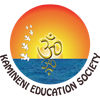Editorial
Treatment of Burns : Can Allopathy achieve “The ideal healing touch” on its own ?
Dr. (Maj.) Suma Kaza
*Corresponding Author
Dr. (Maj.) Suma Kaza
Assistant Professor of Pathology
Kamineni Institute of Medical Sciences
Narketpally, Nalgonda
E-mail ID-cyma2110@gmail.com
Introduction:
The first International Congress on Research in Burns dates to over 50 years ago. This event was organized at National Navel Medical Centre in Bethesda, Maryland, USA. Followed by a compilation of 64 papers edited by Artz and published as the proceedings. Since then immense progress has been made in early resuscitation, infection management, wound excision and coverage which have helped in the fight against burn mortality.1,3 Though wound care is constantly evolving with the advances in medicine, the search for the ideal dressing material still continues as wound care professionals are faced with several challenges.4 Numerous options exist for dressings. While many factors must be considered in dressing selection. The goals in selecting the most appropriate dressing should include providing protection from contamination (bacterial or otherwise), from physical damage, allowing gas exchange, moisture retention and providing comfort to enhance functional recovery5,6.
The World Health Organization (WHO) defines traditional medicine as ‘the health practices, approaches, knowledge and beliefs incorporating plant, animal and mineral-based medicines, spiritual therapies, manual techniques and exercises, applied singularly or in combination to treat, diagnose and prevent illnesses or maintain well-being’.7 The treatment of burn wounds has evolved over several decades through clinical and preclinical research. Significant advancements have been made in patient care, including tracking wound healing, developing novel graft and coverage options.8 An estimate of WHO demonstrates about 80% of world population depends on natural products for their health care, because of side effects and high
cost of modern Medicine.9 Alternative medicine is any healing practice ‘that does not fall within the realm of conventional medicine’. It may be based on historical or cultural traditions rather than on scientific evidence. The terms ‘complementary medicine’ or ‘alternative medicine’ are used inter- changeably with traditional medicine in some countries.4 Generally, the importance and efficacy of traditional and complementary medicine have risen. Almost four billion people worldwide use plants as medicines.10
Management of burn injury has always been the domain of burn specialists. Since ancient time, local and systemic remedies have been advised for burn wound dressing and burn scar prevention. Management of burn wound inflicted by the different physical and chemical agents require different regimes which are poles apart from the regimes used for any of the other traumatic wounds.11 Ayurveda is a traditional system that has evolved in India over centuries using especially native plant sources as remedies. They must be developed for safe use and their efficacy reviewed, taking into account cure well-being and patient satisfaction as well as cost.
Developing a list of products and classifying them appropriately is a beginning for such studies.12 We are glad that a beginning has been made in acknowledging plant products for “Burn Care: Treating minor burns with Potato peel dressings” in our official publication
References
- Burd A. Research in burns – present and future. Indian J Plast Surg. 2010;43:S11–4.
- Thomas SJ, Kramer GC, Herndon DN. Burns: military options and tacticalsolutions.JTrauma. n2003;54:S207–18.
- Proceedings of the First International Congress on Research in Burns, National Naval Medical Center, Bethesda, Md., September 19-22, 1960. Artz CP, editor. Washington, DC: American Institute of Biological Sciences; Oxford: Backwell Scientific Publications; 1962.
- Dorai AA. Wound care with traditional, complementary and alternative medicine. Indian Journal of Plastic Surgery . 2012;45(2):418-424.
- Broussard KC, Powers JG. Wound dressings: selecting the most appropriate type. Am J ClinDermatol. 2013;14:449–59.
- Wasiak J, Cleland H, Campbell F, Spinks A. Dressings for superficial and partial thickness burns. Cochrane Database Syst Rev. 2013;3, CD002106.
- World Health Organization. Traditional medicine: Fact sheet N134. 2008. Dec. Available from:http://www.who. int/mediacentre/factsheets/fs134/en/
- Rowan et al. Burn wound healing and treatment: reviewand advancements; Critical Care pg1-12.
- Satakopan, S., Pharmacopeial Standards for Ayurvedic, Siddha and Unani Drugs. In Proceedings of WHO Seminar on Medicinal Plants and Quality Control of Drugs Used in ISM. Ghaziabad, pp: Kamboj, V.P., Herbal Medicine. Current Science, 78 (1): Krishnan, R., Indian Drug Manufactured Association Bulletin
- Chambliss LR. Alternative and Complementary Medicine: An Overview. ClinObstetGynaecol. 2001;44:640–52.
- V. K. Tiwari, Burn wound: How it differs from other wounds? Indian J Plast Surg. 2012 May-Aug; 45(2): 364–373.
- Ryan TJ, Use of herbal medicines in wound healing: a perspective paper, Int J Low Extreme Wounds. 2003 Mar;2(1):22-4.


